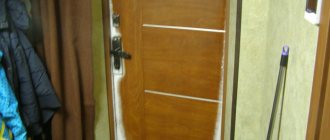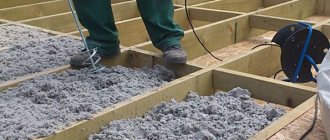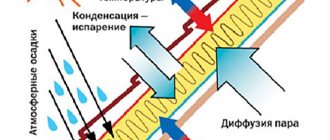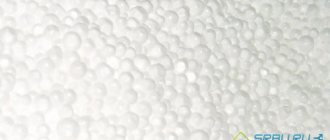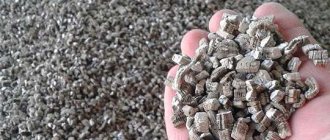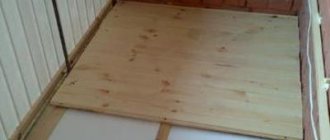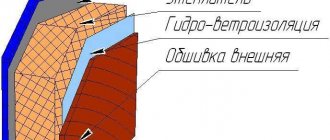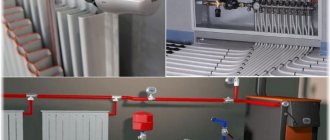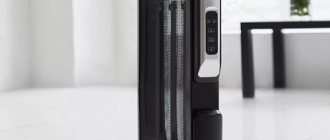The seal for the metal entrance door is attached at the last stage of installation of the door leaf. With its help, it will be possible to reduce the gap between the metal sheet and the frame, and this, in turn, helps to reduce the intensity of heat outflow from the room. It is difficult to imagine doors without a seal, since this material helps to reduce the amount of error that is always provided for during installation. It is available in several varieties, which allows you to choose the most suitable option.
Sealant for metal doors
Door leaves have dimensional errors. When looking at the canvas, it is extremely difficult to notice them, but during operation various minor defects appear: minor bends, leaks, due to which some structural elements do not completely adhere to each other. This phenomenon is explained by the qualities of the metal - it is a strong and rigid material, which means it is difficult to fit with high precision. For this reason, a sealant is used. With its help, the smallest errors in the design are compensated, thereby improving the properties of the door.
What is a seal
This is the name of a flexible material that has the shape of a strip of small width. It provides a seal between the door frame and the leaf of the structure. It is customary to attach sealing material to entrance doors. Interior doors have less need to reduce the gaps around the perimeter. In addition, metal doors are not used in partitions at facilities, so it is advisable to use a seal to adjust the dimensions of entrance structures.
This material is universal, because it can be used for other tasks (windows, vents, etc.). It is easy to install. Most seals are attached to the metal using an adhesive that is applied to one side of the product. Such material is always placed around the perimeter of the door. For this purpose, a special groove can be provided, characterized by suitable dimensions for installing the seal. However, this condition is not optional; the strip can be attached to flat metal, it will still perform its function.
Purpose of the seal
The material is universal, because it simultaneously implements several functions:
- prevents the penetration of odors and dust into the room;
- thermal insulation;
- protection from drafts;
- ensuring tightness;
- soundproofing;
- compensation for minor design defects (bending metal sheets, dimensional errors);
- acts as a shock absorber, so the sash will not slam when closing.
As a result, a high-quality seal for metal doors plays an important role; without it, the design will have many disadvantages.
Specifics of using seals
All heat and sound insulating materials designed to eliminate cracks in door blocks are easily glued to a wooden base and just as easily removed. This ease of installation and dismantling of the sealing circuit allows you to independently insulate the room without resorting to the help of specialists. Thanks to detailed instructions for installing threshold profiles in the lower part of the wooden entrance door leaf, any owner can cope with this task.
Tubular-type materials made of rubber, silicone or rubber are attached to the base with moisture- and frost-resistant sealant or glue. Criteria for selecting seals for the entrance group:
- E-shaped profile (marked “C” or “K”) - to eliminate gaps up to 3 mm;
- P-shaped (marked “V”) - for bridging gaps, 3-5 mm wide;
- D-shaped profile (marked “O”) - to eliminate wide gaps, with a width of 5 mm.
Which one is suitable for a Chinese metal door?
Such designs are of poor quality, so they gradually lose their shape and dents appear on the surface. It is better to use a rubber seal on a metal entrance door. If the gap is minimal, it is permissible to use a foam strip. To prevent the material from failing ahead of schedule, it is recommended to apply an additional layer of glue to the rubber tape, which will ensure increased reliability of fastening. If the seal is made of foam rubber, it is better not to do this, otherwise it will be difficult to dismantle it.
How to seal a wooden door
The material sealing the wooden entrance door must be resilient and elastic. If it does not have a self-adhesive backing, installation will require silicone sealant, a glue gun or liquid nails. In addition to them, you will need the following materials and tools:
- scissors or stationery knife;
- White Spirit;
- clean dry rags.
Operating procedure
- Cutting ribbons.
- Degreasing the base.
- Sticker tapes.
Installation and sealing
To install the seal correctly, it is necessary to accurately measure the length of the tapes that will cover the ends of the wooden door leaf. This can be done in two ways:
- attaching the tape to the end and cutting it in the right place;
- using a tape measure, having previously measured the length of the end and measured a similar distance on the tape.
If the gaps are wide, more than 5 mm, the sealing materials do not need to be cut into pieces, but immediately glued to the base. It must be free of dust, dirt, fats and oils. For this purpose, use white spirit and clean, dry rags. Self-adhesive seals are attached by pressing them against a wooden sheet and gradually removing the protective layer as you go. Before installing materials without an adhesive base, a fixing compound is applied in the right places: silicone sealant or glue. Insulation of the interior door leaf is carried out in a similar way.
Door frame installation
If the wooden door leaf has a textured surface, it is more convenient to insulate it from the side of the frame. In this case, the door can be removed from its hinges, having previously marked with a pencil the places where the heat-insulating tapes will be applied. Before starting installation work, all sides of the wooden door frame are cleaned and degreased with white spirit. After that, sealing materials are glued in a convenient way.
The most important thing when insulating a wooden door is to choose the right thickness of the tape. In this case, you can count on high-quality sound and heat insulation.
Types of seals
This fittings are made from various materials. The simplest options are made from foam rubber, plastic or polyurethane. They are not expensive at all and are equipped with self-adhesive tape, which makes installation much easier. But they have a very big drawback: they quickly wear out and wear out. Therefore, such seals are not worth buying for metal doors.
For metal structures, it is better to choose a silicone or rubber seal.
The advantage of the former is that they are odorless, do not emit any substances into the indoor air, and have high environmental friendliness. There are no allergies to silicone, so such seals are installed in medical institutions, rooms where there are children or people with allergies.
But most often rubber seals are purchased for metal doors. Such fittings have an affordable price and a long service life. Modern types of rubber are resistant to adverse conditions (moisture, temperature), aggressive substances, ultraviolet rays, they do not crack or crumble. Some people are not afraid even of acid.
In addition to the material, seals for metal doors differ in the method of their installation.
They come in three types:
- Self-adhesive. You can replace the seal for iron entrance doors of this type yourself, without any additional devices or tools.
- Magnetic. Quite a new type of tape. They are more often used by manufacturers of metal doors, who immediately equip their products with all the necessary fittings. These seals are not much different from those located on the refrigerator door. Their operation is ensured by a special magnetic insert located inside the thermoplastic elastomer. This product is resistant to aging and can withstand a wide temperature range: -65...+90 degrees. It is installed on the door frame, but you need to clearly adjust the degree of pressure so that the door does not open too hard.
- With additional elements for pressing. In this case, a strip is installed to hold the seal. Due to this, the material retains its shape and characteristics for a long time and does not deform.
Primary requirements
When choosing a seal for the front door, you need to start from the size of the gap that needs to be closed. For example, if the size of the gap when the door is in the closed position is 1-4 mm, then you can install a rectangular rubber band from:
Only rubber products can be a good seal for a metal entrance door. Today on the construction market there are such materials of various colors, which means you always have the opportunity to choose specifically for your door. The most common are black, white and brown. There is an opinion that when adding dye, the quality of the rubber decreases somewhat, and therefore it is worth purchasing a black seal that does not sparkle with originality.
Such materials must meet their basic requirements. First of all, this concerns ensuring complete tightness and protecting the room from penetration:
- cold air;
- extraneous noise;
- moisture;
- pungent odor;
- fine dust.
The door will close smoothly without leaving any gaps. After installing a seal for a metal entrance door, if the product is of good quality, it will not make sharp sounds. It must withstand temperature changes; such stability will not allow it to peel off or harden. The sealant, regardless of operating conditions, should never lose its main properties. It is also important that such products will help protect the door from damage that occurs due to drafts, which often lead to their sudden slamming.
As you can see, it is this seemingly insignificant detail that can ensure smooth closing of the door, tightness, improve sound insulation and retain heat in the room.
The main reason for drafts and unpleasant odors in the area of the front door is a worn or poor-quality seal. Even if the door is insulated, heat loss inevitably increases over time. One fine day you will notice that extraneous noises have begun to penetrate into the apartment, and closing the metal door makes a lot of noise. The reason is the same.
Mounting types
There are sealing elements with self-adhesive tape, with magnetic fastening, and also with an additional clamping mechanism.
Magnetic seals
This new product appeared on our construction markets relatively recently, but has already become quite popular.
A magnetic seal for metal doors is a special frame that exactly follows the contours of the door opening. The product consists of a special magnetic insert, as well as a soft sealing part. The material used is thermoplastic elastomer. It has several advantages - after the product is worn out, it can be sent for recycling. In addition, thermoplastic elastomer is highly resistant to adverse factors and temperature changes.
Magnetic seals are also resistant to ultraviolet radiation and moisture, reliably protecting the room from extraneous noise and drafts, dust and dirt. With these elements, the door will close quietly, and powerful magnets will attract the metal leaf to the door frame, thereby ensuring high tightness and silent closing.
For metal doors, triple seals should be used. The first two are located on the canvas, and the third is on the door frame.
Advantages and disadvantages
The thermoplastic elastomer door seal has the following characteristics compared to other similar products:
- durability of the material - designed for a service life of over 11 years under systematic loads;
- does not lose its original properties during operation;
- the material is able to reliably protect residential and other premises from dust and other negative factors
- elasticity and softness of the sealing element;
- the product is distinguished by a set of good qualities and soft shock absorption;
- with the help of fittings they hide defects in the installation of the opening, for example, gaps or backlash when closing;
- with the correct calculation of the magnet power, the doors will close without additional effort.
Magnetic seals have the following disadvantages:
- Features of the product require accurate calculation of the magnetic force. If magnets are installed stronger than necessary for the opening, difficulties will arise when opening. Especially when there are small children in the family. If the magnet is weak, the door will open freely.
- The seal has a high price level in comparison with other products of this type.
- It cannot be repaired on your own; if there is a problem with the doors, you will need to call an installation company employee.
Principle of operation
The operating principle of a metal door seal is that during the closing process, the doors are attracted to each other by built-in magnets with opposite poles. This connection ensures a complete fit of the frame to the canvas, which guarantees the tightness of the structure better than self-adhesive rubber material.
Magnetic elements are installed on an iron or steel type of canvas.
Installation of magnetic seals
This process will not take much time and will not require any special skills. Of course, it is better if professionals do this. Such systems are installed on canvases where there are no decorative elements.
Although this seal for metal doors has many advantages, it is not suitable for everyone. The main thing is to choose the right strength of the permanent magnet so that children do not have any difficulties.
How to choose a seal for a metal door?
The first step is to decide on the size of the tape, its type and shape. Most often, this fittings are sold in rolls of 6 meters, which is quite enough for a standard entrance door. But for good insulation, several layers of sealant are used, this must be taken into account immediately when purchasing.
Tips for choosing a seal:
- The required thickness and shape of the tape is selected for the door itself and the resulting gaps. The easiest way to do this is with a piece of plasticine. It needs to be wrapped in film (bag) and inserted into the gap between the box and the canvas when the doors are closed. After this, you can measure the required thickness of the seal.
- If the thickness of the gap is insignificant (from 1 to 3 mm), then you can choose a seal for rectangular metal doors made of polyvinyl chloride or polyethylene foam.
- If the size of the cracks is more than 3 mm, then you need to buy rubber material. Its shape can be different, which is determined by its thickness. The thinnest ones up to 3 mm have the appearance of an E or K profile (reminiscent of these letters in cross-section). If the gap is up to 5 mm, then you should opt for P or V-shaped products. D or O shaped profiles are used for the largest gaps from 5 to 7 mm.
- It is better not to purchase a foam rubber seal for a metal door. Iron entrance structures are installed at the entrance of the room, they are often opened and closed, and foam fittings are short-lived.
- If the seal is not self-adhesive, then you need to immediately buy good quality silicone glue for it.
In addition to these characteristics, the color of the material is also important; it is selected depending on the design of the door. But the most successful product is considered to be black: no dyes are added to it, and they usually reduce the quality of the product. It is the black seals that are installed on the outer door, where the insulation requirements are maximum.
What to look for when purchasing?
When choosing a seal for steel doors, you need to carefully inspect it and check its quality.
In particular, you should perform the following actions:
- Read the label on the product, which indicates the expiration date, all the necessary information about the seal and the material used for its manufacture.
- By pressing it is worth checking the elasticity and tightness characteristics. The material should be medium hard, then it will not interfere with the door closing well. When pressed, it should quickly restore its original shape. This is a sign of high quality material.
- If the seal is on self-adhesive tape, then you need to find out the expiration date of the glue. Otherwise it could just dry out. Also, small particles of fiberglass should be applied to the adhesive part.
Most often you can find such products on sale from Germany, Sweden, Poland or Turkey. A good product should not harden when the temperature drops, or peel off when it fluctuates; release toxic compounds into the air.
Purpose of the seal
The very name of this element of door fittings contains the meaning of its use. The main functions of the seal include:
- Protection from outside air (humid, hot or cold), foreign odors, dirt and dust.
- Sound insulation – reducing the level of extraneous noise and audibility of what is happening in the apartment.
- Thermal insulation – minimizing heat loss.
- Sealing the door frame by ensuring the tightness of the mating of its components.
In accordance with the above objectives, the seal must meet the following requirements:
- Ensuring complete tightness of the room, preventing the entry of extraneous noise, odors, moisture, etc.
- Ensuring reliable, smooth and silent closing of the front door.
- Eliminates the occurrence of gaps under conditions of sudden temperature changes.
- Providing additional fire safety – preventing the spread of smoke and fire.
Installation of seal on door structure
Often, in branded door blocks, entrance or sliding, they make a special profile that is designed for installation of a molded sealing product into it. This is a tribute to sliding and many metal blocks; with other types of door structures, things are somewhat different.
There are no problems with self-adhesive tapes, the main thing is to choose the right size. The size is selected as follows:
- plasticine is wrapped in polyethylene;
- plasticine is inserted between the canvas and the frame;
- after which the door closes tightly;
- Having opened the doors again, you get a template that will determine the thickness of the required seal, which will be in compressed form, so it’s worth taking into account additional dimensions.
Installing self-adhesive tape on sliding and other structures is very simple: gradually remove the protective tape from the sticky side and carefully press it along the fold with your fingers along the entire perimeter of the doors.
(Your vote will be first)
Loading…
The best posts
- Wallpaper with clouds to visually expand the room: tips for choosing and pasting on the ceiling
- Design features of a bathroom with a shower (+50 photos)
- Basic style in interior design
- Do-it-yourself balcony block: install it correctly
- Well cleaning. How to clean a well with your own hands?
- Anti-vibration mat for washing machine
- Do-it-yourself accordion folding doors: manufacturing
- How to connect a heated towel rail to a pipe?
Why do you need a seal?
The seal is essentially a tape that is glued along the entire perimeter of the box. Everyone noticed her when entering the house. As a rule, the seal in private houses is installed on street entrance systems or on structures leading from the cold corridor further into the room. In high-rise buildings it is installed on the doors separating the apartment from the landing.
This fittings performs several functions at once:
- The seal for the metal entrance door protects the apartment from the penetration of air from the entrance into it, including providing isolation from extraneous, unpleasant odors (garbage chute, cigarette smoke), dust, and excess moisture.
- Guarantees sound insulation. Moreover, it protects both the apartment from the penetration of sounds into it and reduces the audibility of what is happening in the room itself.
- Retains heat and prevents cold air from entering the house. In the summer, on the contrary, it prevents hot air from getting inside. This fitting also prevents drafts.
- The seal is responsible for the smooth and silent operation of a metal door. There will be no loud clapping with him.
In addition to these tasks, the seal for iron doors partly serves as protection in case of fire: it prevents smoke from leaking into the room. But the fittings will do this only if the tape fits tightly to the metal door without gaps, and its material and workmanship are of high quality.
If you buy a seal that is too thick, it will be difficult to close the door leaf itself and the locks; considerable effort will be required, which will lead to wear of all door hardware. If you choose a tape that is too thin, it will not be able to perform its insulation functions.
Magnetic seals: pros and cons
There are many advantages of using magnetic seals. Among the main positive qualities it is worth noting:
- High rates of heat and sound insulation.
- Protection against the penetration of unpleasant odors.
- Shock absorption when closing the door.
In addition, a high-quality magnetic seal will last at least 10 years, which is also an equally important advantage.
The disadvantages of magnetic seals are:
- Higher cost compared to a conventional seal.
- Difficult to install.
- The selection of material should be done more carefully.
It is recommended to entrust the installation of the magnetic seal to professionals, but if it is not possible to seek help from specialists, then during installation you should definitely take into account some features of such work.
Basic methods for installing door seals
When starting to install a door seal, the first step is to find out what type of product you are dealing with. This will allow you to choose the most optimal way to glue the seal. The most common types of rubber seals are grooved and self-adhesive.
Groove seals
The installation of this material is very simple, which is why it is most often used when repairing doors yourself. The most difficult part of installing the door seal into the groove is finishing the corner areas. Beginners are advised to use careful trimming of the material. More experienced users achieve continuous installation, without joining areas. The latter option is more advantageous, since the level of door sealing in this case is much higher. However, to implement it you will need to show some skill. Door seals at the bottom are equipped with a special edge on which there is a brush: this structure of the material facilitates fairly quick installation into the groove cavity.
While laying both rubber and silicone seals, it is important to avoid even minimal tension on the tape. Otherwise, unacceptable stress will form inside the sealing layer, which will affect its performance. No matter how high-quality the silicone or rubber is, they will gradually stretch, losing their original volume and elasticity. Experienced craftsmen, when laying the seal in the groove, try to slightly compress it, which significantly extends the service life of the door insulation. Trimming of excess parts is carried out upon completion of installation. It is more convenient if only one edge of the rubber or silicone tape is left for trimming: in this case, the remaining segment is longer and can be used to insulate another door.

